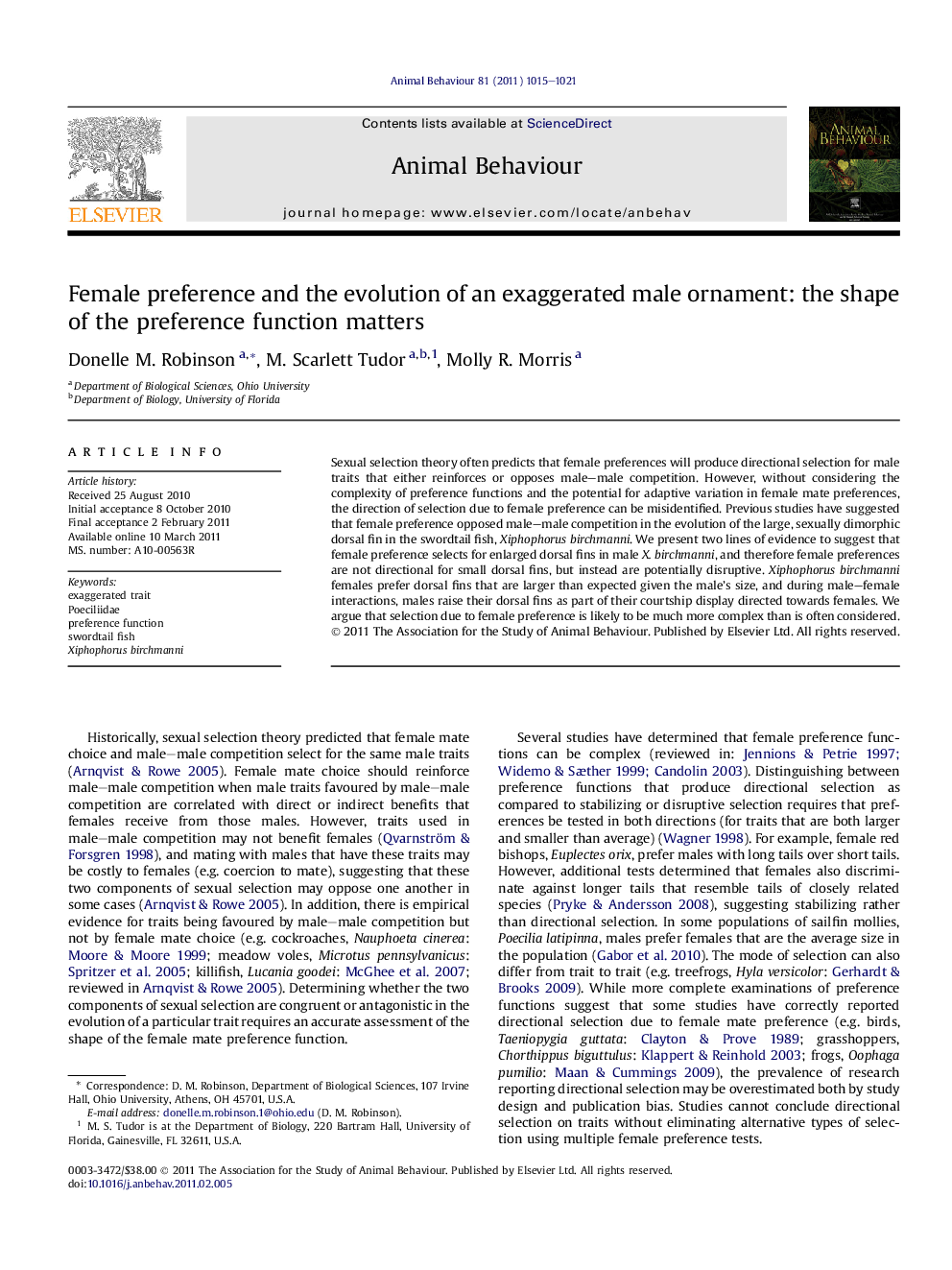| Article ID | Journal | Published Year | Pages | File Type |
|---|---|---|---|---|
| 2417059 | Animal Behaviour | 2011 | 7 Pages |
Sexual selection theory often predicts that female preferences will produce directional selection for male traits that either reinforces or opposes male–male competition. However, without considering the complexity of preference functions and the potential for adaptive variation in female mate preferences, the direction of selection due to female preference can be misidentified. Previous studies have suggested that female preference opposed male–male competition in the evolution of the large, sexually dimorphic dorsal fin in the swordtail fish, Xiphophorus birchmanni. We present two lines of evidence to suggest that female preference selects for enlarged dorsal fins in male X. birchmanni, and therefore female preferences are not directional for small dorsal fins, but instead are potentially disruptive. Xiphophorus birchmanni females prefer dorsal fins that are larger than expected given the male’s size, and during male–female interactions, males raise their dorsal fins as part of their courtship display directed towards females. We argue that selection due to female preference is likely to be much more complex than is often considered.
